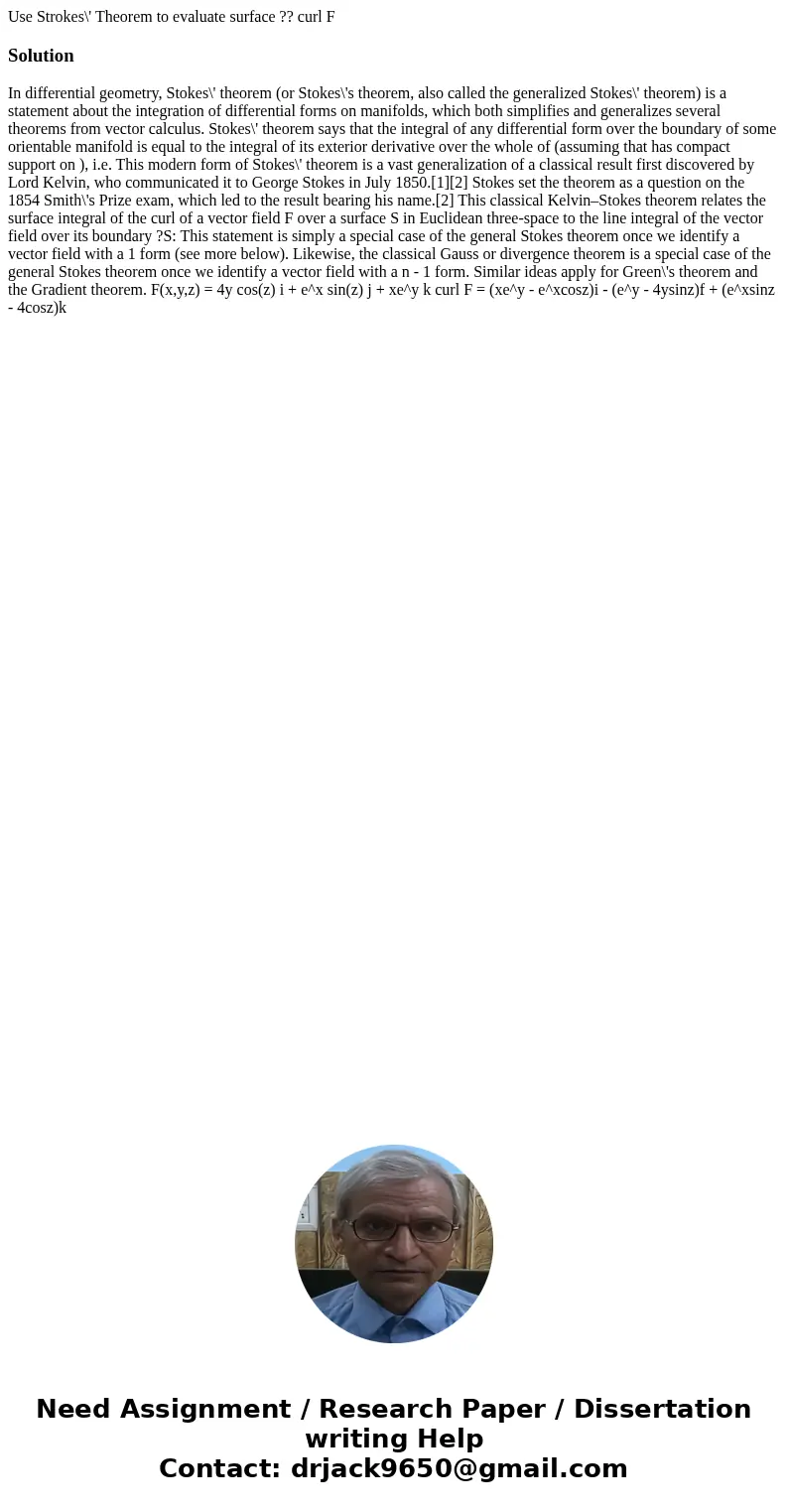Use Strokes Theorem to evaluate surface curl FSolution In d
Use Strokes\' Theorem to evaluate surface ?? curl F
Solution
In differential geometry, Stokes\' theorem (or Stokes\'s theorem, also called the generalized Stokes\' theorem) is a statement about the integration of differential forms on manifolds, which both simplifies and generalizes several theorems from vector calculus. Stokes\' theorem says that the integral of any differential form over the boundary of some orientable manifold is equal to the integral of its exterior derivative over the whole of (assuming that has compact support on ), i.e. This modern form of Stokes\' theorem is a vast generalization of a classical result first discovered by Lord Kelvin, who communicated it to George Stokes in July 1850.[1][2] Stokes set the theorem as a question on the 1854 Smith\'s Prize exam, which led to the result bearing his name.[2] This classical Kelvin–Stokes theorem relates the surface integral of the curl of a vector field F over a surface S in Euclidean three-space to the line integral of the vector field over its boundary ?S: This statement is simply a special case of the general Stokes theorem once we identify a vector field with a 1 form (see more below). Likewise, the classical Gauss or divergence theorem is a special case of the general Stokes theorem once we identify a vector field with a n - 1 form. Similar ideas apply for Green\'s theorem and the Gradient theorem. F(x,y,z) = 4y cos(z) i + e^x sin(z) j + xe^y k curl F = (xe^y - e^xcosz)i - (e^y - 4ysinz)f + (e^xsinz - 4cosz)k
 Homework Sourse
Homework Sourse